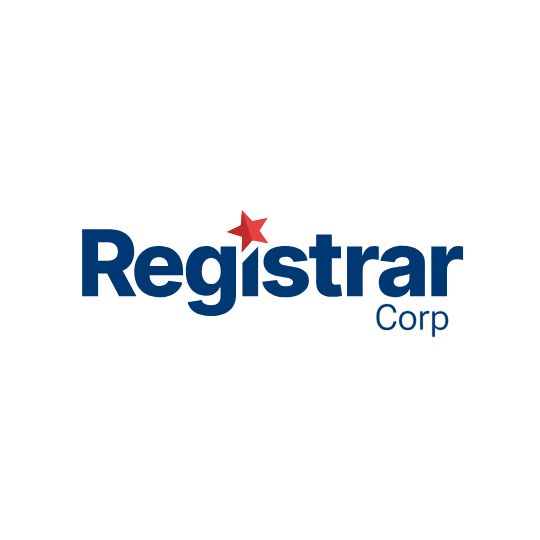In the pharmaceutical industry, data is power—but only if it’s organized, protected, and presented correctly. For manufacturers, contract organizations, and excipient suppliers, the Drug Master File (DMF) and their submissions are the cornerstone of that power.
More than just a technical submission, a well-prepared DMF unlocks regulatory collaboration without sacrificing proprietary protection. It enables multiple downstream sponsors to reference validated information without redundant disclosures. And when leveraged strategically, a DMF does more than meet FDA expectations—it positions your organization as a compliant, credible, and collaborative partner in the global drug supply chain.
But unlocking that value requires more than knowing which DMF type to file. It demands a deep understanding of submission mechanics, global harmonization nuances, life cycle management, and the critical details that, when overlooked, can derail entire development timelines.
Why DMFs Matter in Modern Regulatory Strategy
The Drug Master File is a confidential, voluntarily submitted document provided to the U.S. Food and Drug Administration (FDA) to support a sponsor’s drug application—without sharing sensitive intellectual property. The FDA uses it to review critical information about drug substances, packaging materials, or proprietary processes, while keeping that data shielded from third parties.
DMFs are not submitted for approval. Instead, they are reviewed in conjunction with a sponsor’s application (such as an NDA or ANDA). A DMF that is thorough, current, and structured correctly allows the FDA to complete its assessment of the sponsor’s application with fewer questions and less back-and-forth.
The true strategic value of a DMF lies in its ability to serve multiple stakeholders—contract manufacturers, drug sponsors, excipient suppliers, packaging vendors—while maintaining strict confidentiality and regulatory alignment.
The Five Recognized Types of DMFs
Although this article focuses on the submission process and compliance landscape, it’s important to quickly recognize the five FDA-accepted types of Drug Master Files:
- Type I: Manufacturing Site, Facilities, Operating Procedures, and Personnel (legacy only—not accepted for new submissions)
- Type II: Drug Substance, Drug Substance Intermediate, Drug Product
- Type III: Packaging Materials
- Type IV: Excipients, Colorants, Flavors, etc.
- Type V: FDA-Accepted Reference Information (miscellaneous)
Each serves a distinct function in supporting different elements of a drug’s development or manufacturing workflow.
The DMF Submissions Process
While the FDA outlines the format and process guidelines, the real challenge for DMF holders lies in implementation. Here’s how to get it right—from first draft to long-term maintenance.
1. Requesting a Pre-Assigned DMF Number
Before you can submit a DMF to the FDA, you must first request a pre-assigned DMF number. This step is required and must be completed through the FDA’s system before any content is transmitted. Without a valid pre-assigned DMF number, your file will not be accepted.
2. Preparing and Submitting the DMF Electronically
All DMFs must now be filed in Electronic Common Technical Document (eCTD) format and submitted via the FDA’s Electronic Submissions Gateway (ESG). The file must follow FDA specifications for folder structure, naming conventions, and metadata.
Errors at this stage—such as missing information, non-compliant formatting, or broken hyperlinks—can result in rejection without review.
Once accepted, the DMF number is officially entered into the FDA’s public DMF listing (only the number and holder name, not proprietary content).
3. Authorizing Sponsor Access
A DMF has no impact until a Letter of Authorization (LOA) is submitted, granting the FDA permission to reference the DMF for a specific drug application. The LOA must match the sponsor’s application exactly in terms of:
- Product name
- Dosage form
- Strength
- Application number
A template for the LOA has been published by the FDA and should be followed closely. Misalignment between the LOA and application is one of the most common reasons for administrative delay.
4. Post-Submissions: Ongoing Maintenance and Compliance
FDA expects DMF holders to actively maintain their files. Updates must be submitted any time:
- A manufacturing site changes
- A new process or specification is introduced
- Additional stability data becomes available
In addition, annual reports to the FDA are required for active DMFs. Failure to submit annual updates or respond to FDA information requests can result in a DMF being placed on an inactive list.
Avoiding Common Compliance Gaps in DMF submissions
Even experienced regulatory teams can fall short if key compliance fundamentals are overlooked. Below are some of the most common pitfalls seen in DMF submissions—and how to stay ahead of them.
Inadequate Cross-Referencing
A properly executed LOA must be submitted for each application. It is not enough to assume a general LOA covers new dosage forms or formulation changes. Regulatory clarity demands precision at every step.
Poor Lifecycle Management
DMFs that are out of sync with current GMP practices, reflect outdated processes, or fail to show updates since initial filing are red flags for reviewers and sponsors alike.
Misuse of Type V DMFs
FDA has issued recent guidance on Model Master Files, used to support modeling and simulation data in certain drug development programs. Sponsors must seek prior FDA agreement before filing a Type V DMF, as improper use can lead to outright rejection.
Global Disharmony
Sponsors frequently encounter problems when DMFs intended for the U.S. FDA do not meet expectations for other regions (such as EMA, WHO, or TGA). Variances in GMP certification, documentation, and toxicological justifications can cause duplication or delays if not harmonized from the outset.
Best Practices for Streamlined DMF Submissions
If you want your DMF to be more than a passive file in a database, consider these best practices:
- Design for reusability. Structure your DMF so it can support multiple applications and sponsors with minimal customization.
- Maintain robust document control. Implement a version tracking system, document expiration alerts, and internal audit schedules.
- Conduct mock reviews. Simulate FDA reviewer expectations with third-party audits.
- Include real-time GMP evidence. Site inspections, deviation logs, and batch records should be easily accessible upon request.
- Integrate with sponsor timelines. Maintain close communication with sponsors referencing your DMF to avoid misalignment or outdated references.
Regulatory Efficiency Starts With DMF Excellence
In today’s accelerated drug development landscape, regulatory agencies are moving faster—but only when the data supports it. A Drug Master File that is well-prepared, diligently maintained, and strategically aligned with global standards becomes more than a compliance obligation—it becomes a competitive edge.
For manufacturers and suppliers, it’s a chance to build trust and expand partnerships. For sponsors, it’s a gateway to streamlined review and faster market access.
Your Next Submissions Shouldn’t Be a Guessing Game—Let’s Get It Right from the Start
In regulatory affairs, every detail counts—but trying to manage Drug Master File (DMF) submissions without the right expertise can slow your timeline, compromise your partnerships, and invite costly questions from the FDA.
Registrar Corp doesn’t just help you “check the box.” We architect DMFs that stand up to scrutiny, unlock value for sponsors, and keep your regulatory narrative aligned across global markets.
Whether you’re:
- Drafting your first Type II DMF for a novel active ingredient
- Managing a network of Type III packaging references
- Coordinating multi-region submissions with the EMA, WHO, or TGA
We bring clarity, control, and confidence to the table. Our team of regulatory experts delivers:
- Precision DMF authoring and formatting in full eCTD compliance
- End-to-end lifecycle management, from LOA coordination to updates
- Global harmonization for ASMFs, CEPs, and PSMFs
Why risk delays or missteps when you can move forward with certainty? Connect with Registrar Corp and make every submission a strategic advantage.









